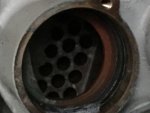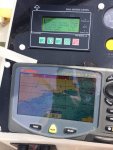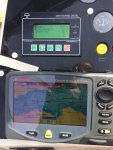MapisM
Well-known member
Ok, that sounds familiar.
All heat exchangers (engines and gearboxes) and aftercoolers of my boat are being cleaned as I'm writing.
I was actually curious about the 5 years interval that you mentioned, is it specified in R6 service manual?
Afaik, MAN recommendation for V engines is either 200 hours or 2 years, whatever comes first.
A deadline which in my experience even MAN official dealers don't dare recommending, actually.
Most of them agree that 4 years regardless of hours is a sensible timing.
You are making me curious about the oil cooler gasket, though.
That's not something I've ever heard to be a problem, in V engines.
I don't even know where it is, in fact...
If you could elaborate a bit more, I for one am interested, TIA!
All heat exchangers (engines and gearboxes) and aftercoolers of my boat are being cleaned as I'm writing.
I was actually curious about the 5 years interval that you mentioned, is it specified in R6 service manual?
Afaik, MAN recommendation for V engines is either 200 hours or 2 years, whatever comes first.
A deadline which in my experience even MAN official dealers don't dare recommending, actually.
Most of them agree that 4 years regardless of hours is a sensible timing.
You are making me curious about the oil cooler gasket, though.
That's not something I've ever heard to be a problem, in V engines.
I don't even know where it is, in fact...
If you could elaborate a bit more, I for one am interested, TIA!






